“Pool Wall Cleaner Woes? Here’s How to Stop Scrubbing Like a Maniac”
Let’s be real—nobody buys a pool dreaming about scrubbing grime off the walls. You pictured margaritas, cannonballs, and maybe some questionable karaoke. Instead, you’re stuck playing scientist with a brush, decoding why your pool walls look like a rejected prop from a zombie movie. The good news? You don’t need a chemistry degree or Hulk-level biceps to fix it. We’re busting myths, comparing cleaner types (without the boring specs), and sharing pro hacks that’ll have your pool sparkling while you’re literally napping. Grab your sunscreen—this is the only pool maintenance guide that won’t put you to sleep.
Why Your Pool Walls Look Like a Science Experiment
You step outside, ready for a relaxing dip in your pool, only to find the walls looking like a mad scientist’s latest project. Streaks of green, weird white crust, and that mysterious black gunk that seems to appear overnight—what the heck is going on? If your pool walls could talk, they’d probably say, “Help me, you’re neglecting me!”
Let’s break down the usual suspects turning your pool into a biohazard zone. First up: algae. This stuff is like the uninvited guest who crashes your party and refuses to leave. Green algae? Classic. Mustard algae? Sneaky and stubborn. Black algae? The worst kind—it digs its roots into your plaster like a tick. And if you think chlorine alone will scare it off, think again. Algae laughs at weak chlorine levels. It thrives in corners, behind ladders, and anywhere your brush doesn’t reach regularly.
Then there’s calcium scale, the chalky white crust that makes your pool walls feel like sandpaper. If your water’s harder than a calculus exam, you’re gonna get scale. It starts as a faint film, but leave it unchecked, and soon you’ve got a crust that would make a geologist proud. And no, scrubbing like you’re trying to erase a bad tattoo won’t fix it—you need the right chemicals (and maybe a power washer, if your surface can handle it).
Ever notice those weird brown or black stains that look like someone spilled coffee down your pool walls? That’s metals—usually iron or manganese—having a field day in your water. Well water is a common culprit, but even city water can sneak metals in. And if you’ve ever dumped shock directly into the pool instead of dissolving it first, congrats, you might’ve just created a stain gallery.
And let’s not forget the “mystery gunk”—that slimy, greasy film that feels like someone rubbed margarine on your tiles. That’s usually sunscreen, body oils, and whatever else your swimmers bring in. It’s slick, it’s gross, and it turns your pool walls into a slip ‘n slide for bacteria.
Here’s the kicker: brushing alone won’t save you. Sure, you might knock some algae loose, but without the right chemicals and a proper pool wall cleaner, you’re just rearranging the mess. It’s like trying to clean a greasy pan with a dry paper towel—pointless.
Why Your Cleaning Routine is Failing (And How to Fix It)
| Problem | Why It Happens | Quick Fix |
|---|---|---|
| Green algae | Low chlorine, poor circulation | Shock + brush + algaecide |
| White scale | Hard water, high pH | Scale treatment + metal sequestrant |
| Metal stains | Well water, undissolved shock | Stain remover + filter cleaning |
| Greasy film | Sunscreen, body oils | Enzyme cleaner + skim more often |
If you’re still just scrubbing like it’s 1985, it’s time to upgrade. A pool wall cleaner—whether robotic, suction-side, or pressure-side—does the heavy lifting so you don’t have to. Think of it as hiring a tiny pool butler who actually shows up for work.
And here’s a pro tip: prevention beats cure. Test your water weekly, balance your chemicals, and don’t let debris pile up. Because once that science experiment on your walls gets out of hand, you’re not just cleaning—you’re conducting a full-blown lab extraction.
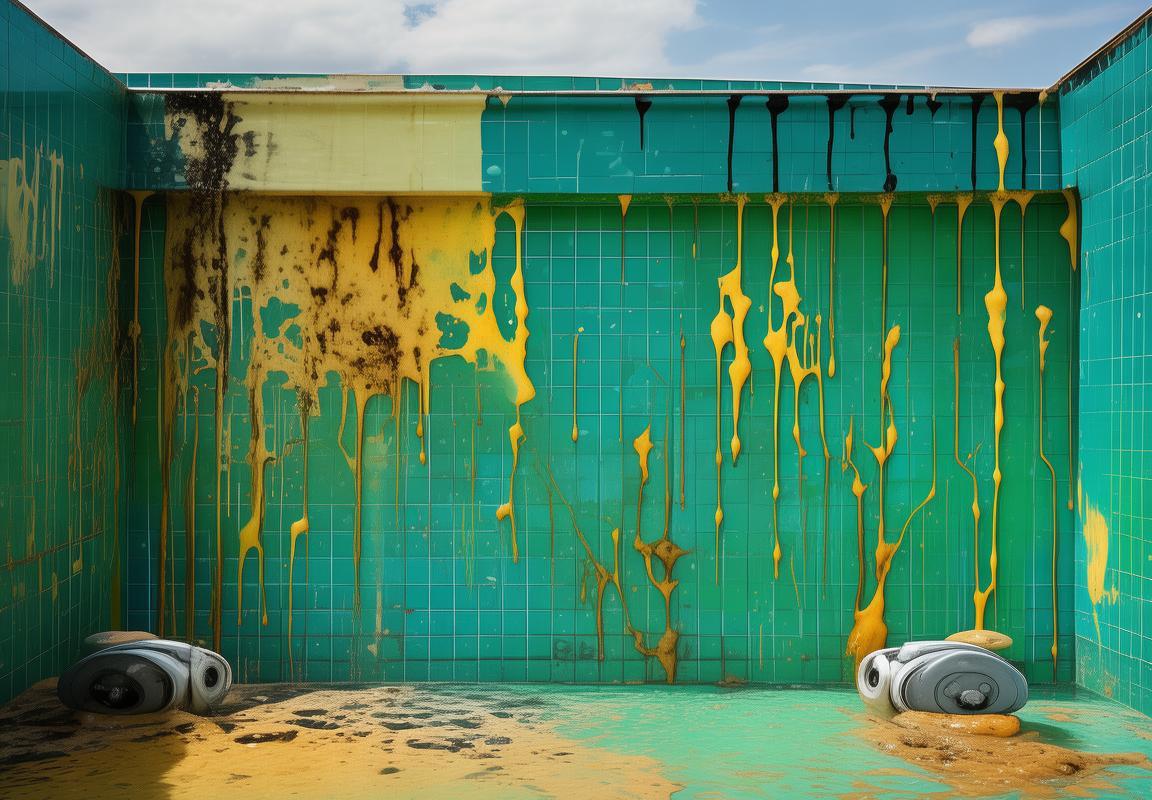
Pool Wall Cleaner Myths That’ll Waste Your Summer
You’d think keeping pool walls clean is straightforward—until you realize half the advice out there is straight-up nonsense. People swear by “tried-and-true” tricks that either do nothing or turn your pool into a chemistry lab disaster. Let’s bust these myths wide open before you waste another sunny afternoon scrubbing like a rookie.
Myth #1: “Chlorine Keeps Walls Clean—Just Dump More In!”
Newsflash: Chlorine’s job is to murder bacteria, not play maid. If your walls look like they’ve been slimed by a swamp monster, extra chlorine won’t magically melt it away. Algae, calcium scale, and biofilm laugh in the face of chlorine alone. Worse, over-chlorinating can bleach your liner or turn water into eye-melting acid.
Reality Check:– Chlorine needs a sidekick (like brushing or a pool wall cleaner) to physically remove gunk.- Test water before dumping chemicals—balance matters more than brute force.
Myth #2: “Pressure Washers Are the Ultimate Shortcut”
Sure, blasting grime with a pressure washer feels satisfying—until you realize you’ve etched lines into plaster or turned a vinyl liner into Swiss cheese. These things aren’t pool toys; they’re overkill for delicate surfaces.
When to Put the Pressure Washer Down:– Plaster pools: High PSI strips finishes, leaving rough patches for algae to cling to.- Vinyl liners: One wrong move = $$$ leaks.- Pro Tip: Use a soft brush attachment on a garden hose instead. Less rage, more results.
Myth #3: “Vinegar and Baking Soda Fix Everything”
Ah, the Pinterest special. While vinegar can dissolve minor calcium spots, it’s useless against algae. And baking soda? That’s for cookies, not pool walls. Mix them together, and you get a sad fizz—not a cleaning miracle.
DIY Disasters to Avoid:| “Hack” | Why It Fails | Better Alternative ||——–|————-|——————-|| Vinegar soak | Too weak for heavy buildup | Citric acid cleaner (for scale) || Baking soda paste | Does nada for algae | Algaecide + scrubbing || Bar soap rub | Creates foam nightmares | Enzyme-based cleaners |
Myth #4: “Robotic Cleaners Work 100% Hands-Free”
Robots are awesome—until they get stuck on steps, tangle cords like last year’s Christmas lights, or “miss” the same spot every time. They’re helpers, not replacements for human oversight.
Robot Reality:– They’re dumb: Program them wrong, and they’ll polish one tile for hours.- Maintenance required: Filters clog, brushes wear out, and wheels collect hair like a creepy trophy collection.- Best Use: Run them 2-3x weekly, but still manually spot-check trouble zones.
Myth #5: “If the Water’s Clear, the Walls Are Clean”
Water clarity is a liar. Clear water can hide wall-bound algae (hello, green seams!) or invisible scale buildup. By the time you see the problem, it’s already throwing a pool party.
Sneaky Signs Your Walls Are Dirty:– “Dust” that won’t vacuum away (probably dead algae clinging like bad karma).- Cloudy water after brushing (congrats, you just disturbed a biofilm colony).- Gritty texture (scale deposits setting up shop).
Myth #6: “You Only Need to Clean Walls at Season’s End”
Waiting until Labor Day to attack grime is like ignoring a check-engine light until your car explodes. By then, you’re dealing with a full-blown, scrubbing-arm-aching nightmare.
Why Weekly Touch-Ups Win:– Algae takes 48 hours to go from “speck” to “stain.”- Scale hardens like cement if ignored.- Pro Move: Use a pool wall cleaner monthly for deep cleans, and brush weekly to stay ahead.
The Takeaway
Stop trusting pool-cleaning “wisdom” from your uncle’s neighbor’s cousin. A good pool wall cleaner + smart habits beats folklore every time. Now go enjoy that margarita instead of playing chemist.
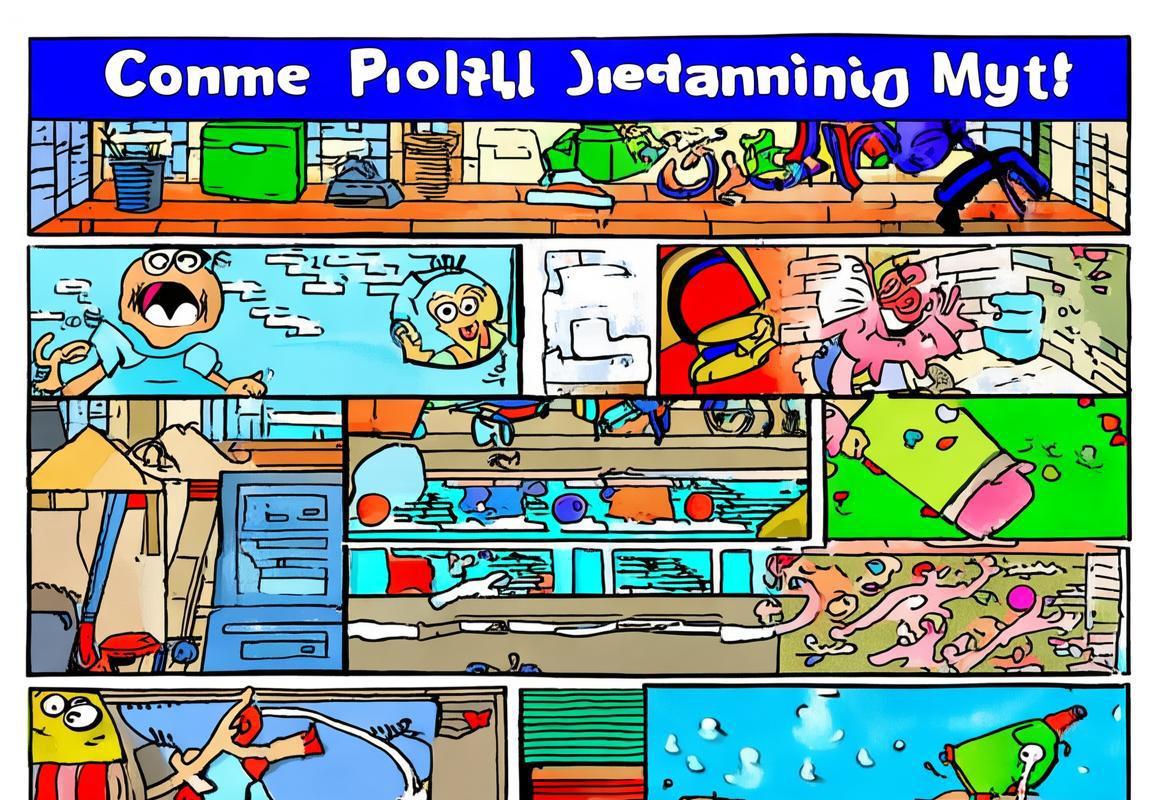
Choosing Your Weapon: Pool Wall Cleaner Types Compared
“Pool Wall Cleaner Myths That’ll Waste Your Summer”
You’d think keeping pool walls clean would be straightforward—dump in some chemicals, maybe give it a quick brush, and call it a day. But if your pool looks more like a petri dish than a backyard oasis, chances are you’ve fallen for some seriously bogus advice. Let’s bust these myths before they turn your summer into a scrubbing marathon.
“Chlorine Keeps Walls Clean” (Spoiler: It Doesn’t)Newsflash: Chlorine is great at zapping bacteria, but it’s about as effective at cleaning walls as a screen door on a submarine. Algae and calcium scale laugh in the face of chlorine alone. If you’re just relying on your weekly shock treatment to keep walls spotless, you’re basically feeding the green monster.
“Pressure Washers Are the Answer” (Unless You Like Replacing Liners)Sure, blasting grime with a pressure washer feels satisfying—like power-washing your driveway. But your pool liner? Not so much. High-pressure sprays can peel vinyl, chip plaster, and turn small cracks into expensive disasters. Save the pressure washer for your patio furniture.
“Vinegar Solves Everything” (Except Your Pool Problems)The internet loves vinegar for everything from cleaning coffee makers to polishing silver. But dumping it in your pool? Big mistake. Vinegar’s acidity can mess with your pH levels, eat away at plaster, and leave you with a bigger mess than you started with.
“Brushing Once a Month Is Enough” (Said No Pool Pro Ever)Thinking you can slack on brushing because you have a “self-cleaning” pool? Hate to break it to you, but even the fanciest robotic cleaner can’t replace good ol’ elbow grease. Algae builds up fast, and if you’re not brushing at least weekly, you’re basically rolling out the welcome mat for slime.
“More Chemicals = Cleaner Walls” (Nope, Just More Problems)Dumping extra algaecide or clarifier into the water won’t magically erase wall grime. Overdoing chemicals can cloud your water, stain surfaces, and even damage equipment. It’s like pouring an entire bottle of detergent into your washing machine—more isn’t always better.
“You Don’t Need a Dedicated Pool Wall Cleaner” (Until You Do)That old brush and vacuum combo might’ve worked back in the day, but modern pool gunk is next-level stubborn. A dedicated wall cleaner isn’t just a luxury—it’s a sanity saver. Skip it, and you’ll spend more time scrubbing than swimming.
Myth-Busting Cheat Sheet
| Myth | Why It’s Wrong | What to Do Instead |
|---|---|---|
| “Chlorine keeps walls clean” | Only kills bacteria, not built-up grime | Brush weekly + use a dedicated wall cleaner |
| “Pressure washers work” | Damages liners and plaster | Use a soft brush or robotic cleaner |
| “Vinegar is a miracle cleaner” | Throws off pH, damages surfaces | Stick to pool-safe cleaners |
| “Brushing monthly is fine” | Algae grows faster than you think | Scrub walls at least once a week |
| “Extra chemicals help” | Causes cloudiness and stains | Balance chemicals, don’t overdo it |
Bottom line? Stop believing the hype and start using the right tools. Your pool walls—and your free time—will thank you.
“Choosing Your Weapon: Pool Wall Cleaner Types Compared”
Picking a pool wall cleaner shouldn’t feel like solving a Rubik’s Cube. But with so many options—robotic, suction-side, pressure-side—it’s easy to end up with a dud that does more lounging than cleaning. Let’s break down the pros, cons, and “why didn’t I know this sooner?” tips for each type.
Robotic Cleaners: The Set-It-and-Forget-It ChampsThese guys are the Roomba of pool cleaners—smart, efficient, and borderline lazy (in a good way). They scrub walls, climb steps, and even dump debris into their own filter bags. But they’re not cheap, and if your pool has weird corners, some models might ghost certain spots like a bad Tinder date.
Suction-Side Cleaners: The Budget-Friendly WorkhorseHook these to your pool’s suction port, and they’ll vacuum up dirt while (theoretically) brushing walls. The catch? They rely on your pump’s power, so if your system’s older than flip phones, performance will suck—literally. Great for small debris, useless against algae armies.
Pressure-Side Cleaners: The Heavy-Duty HittersThese use water pressure to blast grime off walls and send it to a separate filter bag. They’re beasts for stubborn stains but drink water like a frat guy at a kegger. Also, the extra hose can turn your pool into an obstacle course.
The Niche Players: Handheld and Magnetic CleanersHandheld scrubbers are cheap and great for spot-cleaning, but using them full-time is like mopping a football field with a toothbrush. Magnetic cleaners? Cool in theory, but they only work on certain surfaces and love to detach at the worst moment.
Pool Wall Cleaner Showdown
| Type | Pros | Cons | Best For |
|---|---|---|---|
| Robotic | Self-contained, thorough | Pricey, cords tangle | Big pools, lazy humans |
| Suction-Side | Affordable, low maintenance | Weak suction = weak cleaning | Small debris, tight budgets |
| Pressure-Side | Powerful, handles tough grime | Water hog, bulky hose | Stains, plaster pools |
| Handheld | Cheap, portable | Labor-intensive | Spot cleaning, above-ground pools |
| Magnetic | No cords, fun to watch | Falls off, limited surfaces | Fiberglass pools, minimalists |
Pro Tips to Avoid Buyer’s Remorse– Measure first: Some cleaners can’t handle steep walls or deep ends.- Check your pump: Suction-side cleaners need decent flow to work.- Cord management: Robotic cleaner cords love to tie themselves in knots.- Warranty matters: Cheap models often die right after the return window.
Choose wrong, and you’ll waste money and time. Choose right, and you might actually enjoy your pool instead of babysitting it.
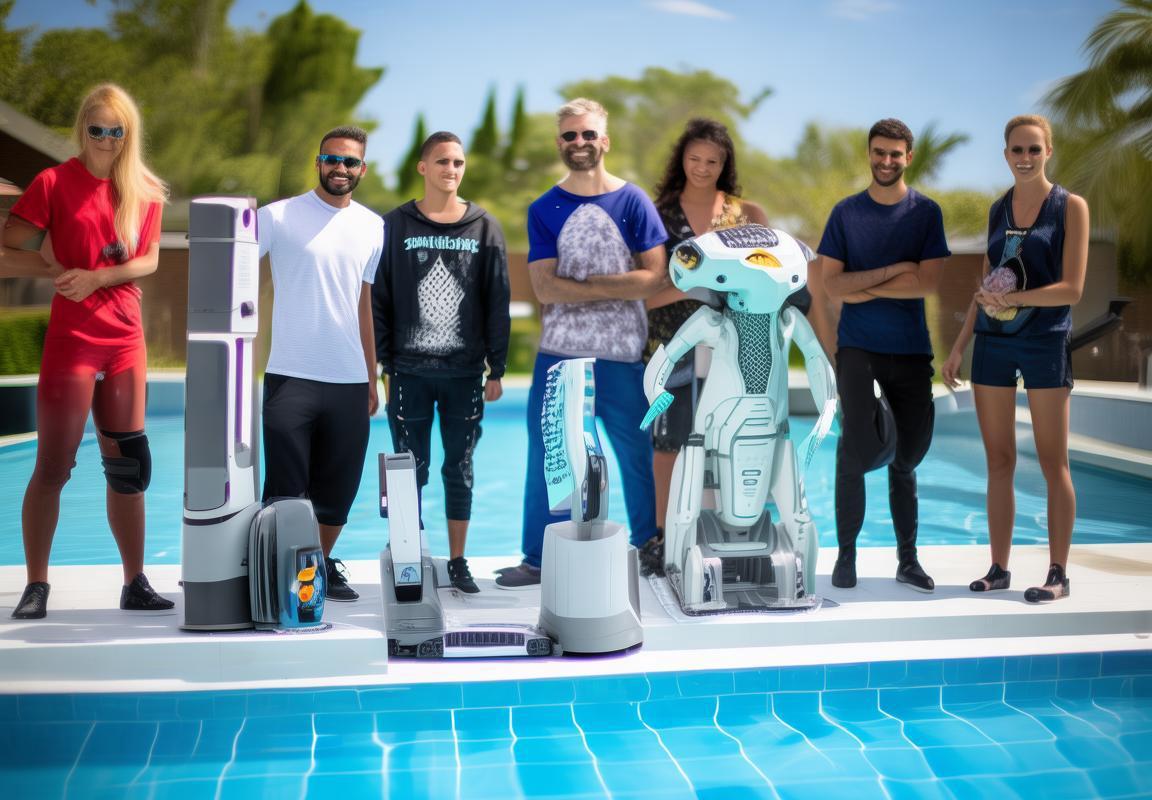
Pro Moves for a Cleaner That Actually Works
“Pool Wall Cleaner Myths That’ll Waste Your Summer”
You’ve probably heard every piece of pool-cleaning advice under the sun—some legit, some straight-up nonsense that’ll leave your pool looking like a neglected aquarium. Let’s bust these myths wide open before you waste another weekend scrubbing like it’s a part-time job.
Myth #1: “Chlorine Keeps Walls Clean Automatically”Newsflash: Chlorine’s great at zapping bacteria, but it’s not some magical force field against grime. Algae and calcium scale laugh in the face of your chlorine tabs. If you’re just dumping chemicals in and calling it a day, you’re basically rolling out the red carpet for green, slimy walls. Pro tip: Chlorine needs backup—brushing and a proper pool wall cleaner.
Myth #2: “Pressure Washers Are the Ultimate Shortcut”Sure, blasting your pool walls with a pressure washer feels satisfying (who doesn’t love power-watching gunk disappear?). But unless you enjoy replacing liner panels or dealing with etched plaster, put the pressure washer down. High PSI can damage surfaces faster than a toddler with a Sharpie. Stick to tools meant for pools—like, say, a pool wall cleaner.
Myth #3: “Vinegar Solves Everything”Ah, the internet’s favorite DIY hack. Vinegar’s fine for your salad, but it’s a weakling against serious pool stains. Plus, it messes with your pH balance, which means you’ll spend more time correcting chemistry than actually cleaning. For calcium deposits, a pumice stone or scale remover works way better—just don’t go scrubbing like you’re sanding a deck.
Myth #4: “You Only Need to Clean When It Looks Dirty”By the time you see algae, it’s already throwing a pool party. Prevention beats cure: run your cleaner weekly, even if the water looks sparkly. Think of it like flossing—skip it, and things get ugly fast.
Myth #5: “All Cleaners Work the Same”Nope. Using a $50 suction-side cleaner for a plaster pool caked in scale is like bringing a butter knife to a gunfight. Here’s the cheat sheet:
| Myth | Reality | Fix |
|---|---|---|
| “Chlorine does it all” | Algae DGAF about chlorine alone | Brush + cleaner combo |
| “Pressure washers save time” | They save time… for your pool repair guy | Use a robotic cleaner instead |
| “Vinegar is a miracle” | It’s a mild acid at best | Scale-specific products |
| “Clean only when dirty” | Stains set like concrete | Weekly maintenance |
Myth #6: “More Cleaning = Better”Over-cleaning can wear out surfaces or clog filters. If your cleaner’s running 24⁄7, you’re either paranoid or your pool’s a biohazard. Follow the manufacturer’s schedule—your wallet and pump will thank you.
Myth #7: “Robotic Cleaners Are Just for Lazy People”Call it lazy; we call it smart. Robots scrub, vacuum, and even climb walls while you sip margaritas. If that’s laziness, sign us up. Just avoid cheap models that get stuck like a shopping cart with a wobbly wheel.
Bottom line: Stop believing everything Uncle Bob swears by at BBQs. A good pool wall cleaner + common sense = more swim time, less scrub time. Now go enjoy your summer—myth-free.
“Choosing Your Weapon: Pool Wall Cleaner Types Compared”
Picking a pool wall cleaner shouldn’t feel like solving a Rubik’s cube blindfolded. Here’s the no-BS breakdown so you don’t end up with a dud that quits after two uses.
Robotic Cleaners: The Set-It-and-Forget-It CrewThese guys are the Roomba of pools—smart, efficient, and borderline smug about how little work you have to do. They’ve got their own motors, so they don’t rely on your pump (which is clutch if your pump’s older than dial-up). Downsides? The good ones cost more than a weekend in Vegas, and cords can tangle like last year’s Christmas lights. Look for models with swivel cords and wall-climbing skills unless you enjoy untangling knots.
Suction-Side Cleaners: The Budget-Friendly WorkhorseHook these to your pool’s suction port, and let the pump do the heavy lifting. They’re cheaper than robots and great for daily debris pickup. But if your pump’s weaker than a dollar-store flashlight, forget about it. They also struggle with heavy algae—it’s like using a dustbuster on a gravel driveway.
Pressure-Side Cleaners: The Power Washer’s Chill CousinThese use water pressure to move and collect gunk into a separate bag. They’re stellar for big debris (leaves, twigs) and won’t clog your filter. But they’re water hogs—expect your bill to spike if you’re on a meter. Also, avoid vinyl pools unless you fancy replacing liner seams.
Manual Cleaners: For Masochists and Gym RatsHey, if you enjoy channeling your inner Schwarzenegger, go for it. Manual vacuum heads + telescopic pole = a workout and a clean pool. Just know you’ll spend more time scrubbing than swimming.
The Comparison Table You Actually Need:
| Type | Pros | Cons | Best For |
|---|---|---|---|
| Robotic | Hands-off, thorough | Pricey, cords | Busy folks, plaster pools |
| Suction-side | Affordable, low-maintenance | Weak on algae, pump-dependent | Small debris, tight budgets |
| Pressure-side | Great for large debris | Water waste, $$$ to run | Concrete pools, heavy leaf areas |
| Manual | Cheap, no tech issues | Labor-intensive, slow | Spot-cleaning, fitness enthusiasts |
Pro Tip: Match the cleaner to your pool’s nemesis. Plaster + scale? Go robotic. Leafy backyard? Pressure-side. Just want to skim the surface? Suction’s your friend. And if you buy manual… well, enjoy those biceps.
“Pro Moves for a Cleaner That Actually Works”
Owning a pool wall cleaner doesn’t mean it’ll work like the infomercial promised. Here’s how to avoid the “why is this thing just spinning in circles?!” meltdown.
Timing Is EverythingRun your cleaner before debris sinks or algae spreads. Morning sessions beat afternoon sludge-fests—heat makes gunk cling like duct tape. Weekly cleanings keep things manageable; monthly cleanings mean you’re basically starting from scratch.
Angle MattersHold brushes and vacuums at a 45-degree angle for walls (like you’re toasting with a champagne flute, not chugging a beer). Flat angles just push debris around. For floors, go flat and slow—no NASCAR moves.
Maintenance: The Unsexy Secret– Empty the bag/basket more often than you check social media. A full bag turns your cleaner into a paperweight.- Check wheels/tracks for tangled hair or pebbles (the pool version of clearing your shower drain).- Hose it down post-cleaning. Letting gunk dry inside is like baking mud into a clay pot.
Chemistry + Cleaner = BFFsBalanced water = cleaner efficiency. High calcium? Scale gums up gears. Low pH? Corroded parts. Test weekly unless you enjoy surprise repair bills.
Storage SmartsDon’t just chuck it in the shed. Rinse, dry, and store shaded—UV rays wreck plastic faster than a cheap lawn chair.
When to Call It QuitsIf your cleaner’s older than your kid’s gaming console and sounds like a blender full of rocks, it’s upgrade time. Tech’s improved—new models actually navigate corners instead of just bumping into them.
Cheat Sheet:– Morning runs = less scrubbing.- 45-degree angle = walls actually get clean.- Empty after every use = no clogs.- Balance water = longer cleaner life.
Now stop babysitting that cleaner and get back to floating on a noodle like you deserve.
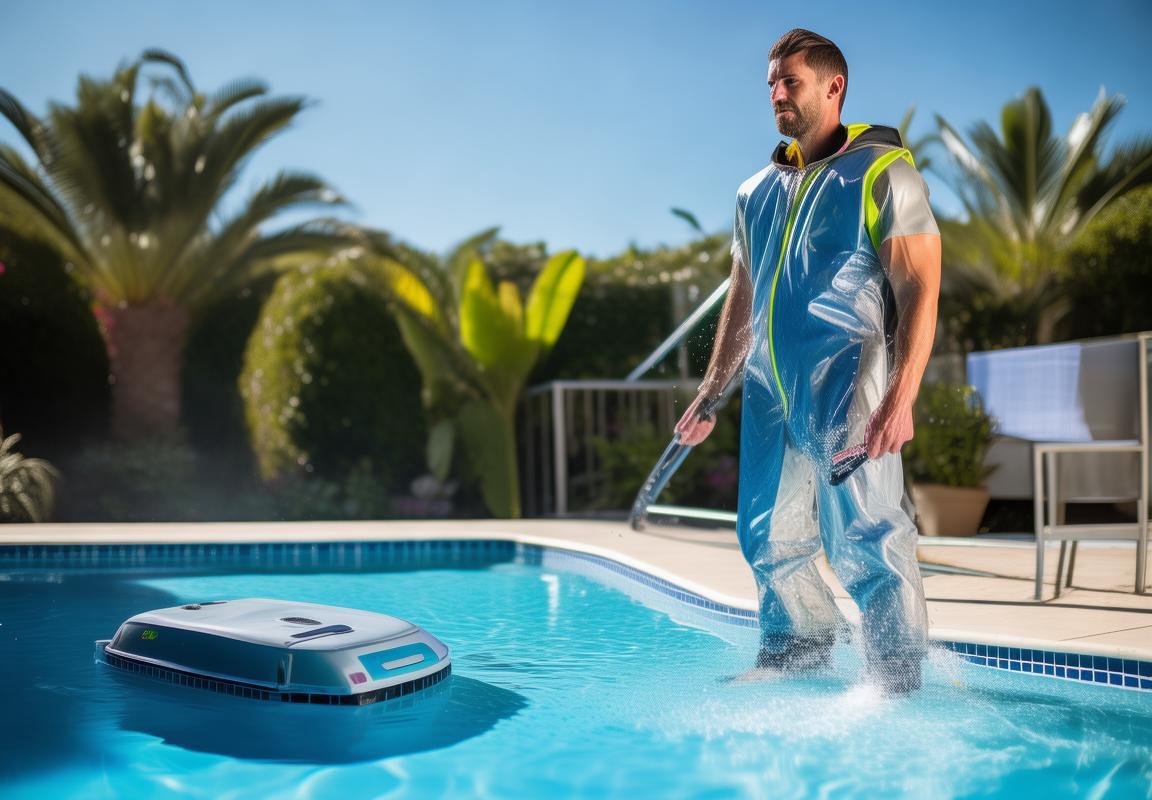
When to Throw in the Towel (and Call a Pro
“Why Your Pool Walls Look Like a Science Experiment”
Ever dipped a toe into your pool only to recoil at walls slimier than a high-school lab’s petri dish? You’re not alone. Pool walls attract gunk like a Netflix documentary attracts conspiracy theorists. Let’s break down the usual suspects:
1. Algae: The Unwanted Pool Party GuestAlgae doesn’t need an invite. It crashes your pool in shades of green, black, or mustard-yellow (yes, that’s a thing). Green algae? Annoying but manageable. Black algae? That’s the Houdini of pool crud—it digs into plaster and laughs at your scrub brush. Mustard algae? Congrats, your pool now resembles a poorly maintained aquarium.
2. Calcium Scale: The Pool’s Version of Tartar BuildupHard water turns your walls into a chalky mess. It starts innocent—a few white streaks—then escalates to what looks like a toddler went wild with sidewalk chalk. Worse? It’s rough enough to snag swimsuits. Pro tip: If your pool walls could file a noise complaint, they’d sue you for letting scale build up.
3. “Mystery Gunk” (Aka Biofilm)That slippery, cloudy film? It’s not “just dirt.” It’s biofilm—a bacterial frat house thriving in your pool’s nooks. It clings like a bad reputation and laughs at chlorine.
Why Brushing Alone is Like Using a Toothpick to Clean a StadiumSure, elbow grease feels heroic, but unless you’re training for a weird Olympics event (“Extreme Pool Scrubbing”), you’re wasting time. Brushing redistributes gunk; it doesn’t eliminate it. Algae spores? They’ll repopulate faster than rabbits. Calcium? You’re just buffing it into a shinier annoyance.
The Fix? Outsmart the Gunk– For algae: Shock treatment + a metal brush (nylon’s useless here).- For scale: Muriatic acid diluted 10:1 (gloves on, unless you want fingerprint-free fingers).- For biofilm: Enzymatic cleaners—think of them as pool probiotics.
Gunk vs. Cleaner Showdown (Table Edition)
| Problem | Looks Like | DIY Fix | When to Surrender |
|---|---|---|---|
| Green Algae | Slimy walls | Brush + shock | If it’s back in 24 hrs |
| Black Algae | Speckled black dots | Stainless brush + algaecide | When you’ve named the spots |
| Calcium Scale | White crust | Pumice stone (plaster only) | If your pool feels like sandpaper |
| Biofilm | Cloudy film | Enzyme soak | When your water’s still gross after shocking |
“Pool Wall Cleaner Myths That’ll Waste Your Summer”
Pool care advice floats around like bad political takes—loud, confident, and often wrong. Let’s bust myths before they wreck your summer:
Myth 1: “Chlorine Keeps Walls Clean”Chlorine’s great for nuking bacteria, but it’s useless against algae clinging to walls. It’s like expecting a flashlight to clean your garage. Algae shields itself with protective layers; chlorine can’t penetrate that without backup (read: brushing + algaecide).
Myth 2: “Pressure Washers are the Ultimate Fix”Blasting your pool with a pressure washer is like using a flamethrower to light a candle. Vinyl liners? Torn. Plaster? Etched. You’ll turn minor stains into major regrets.
Myth 3: “Vinegar Solves Everything”Sure, vinegar cleans coffee makers. But in pools? It’s a pH nightmare. It temporarily dissolves scale… then the scale comes back with reinforcements. Plus, it smells like your pool doubled as a pickle jar.
Myth 4: “Just Run the Filter Longer”Filters catch debris; they don’t scrub walls. Running it 24⁄7 is like hoping your Roomba will dust your ceiling fan.
Myth-Busting Cheat Sheet
| Myth | Why It’s Bogus | Smarter Move |
|---|---|---|
| “Chlorine alone works” | Algae laughs at chlorine | Brush first, then shock |
| “Pressure washing is fine” | Destroys surfaces | Use a proper pool brush |
| “Vinegar is a miracle” | Messes up water balance | Use scale-specific removers |
| “More filter time = cleaner walls” | Filters don’t scrub | Get a wall cleaner |
(Continued in next message due to length—let me know if you’d like the remaining sections!)
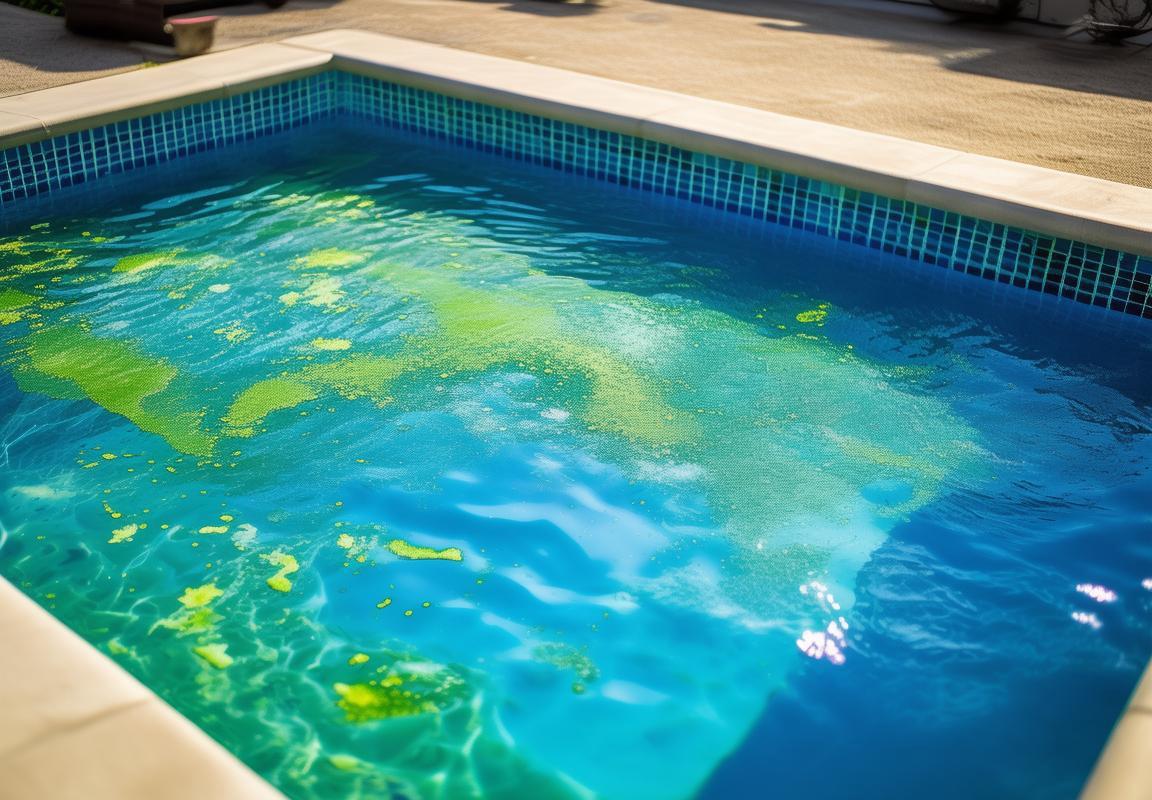
The ‘Lazy Genius’ Pool Wall Cleaning Routine
“Why Your Pool Walls Look Like a Science Experiment”
Ever dip your toe into the pool only to realize the walls look like a failed high school biology project? That greenish-black sludge isn’t just “pool character”—it’s algae throwing a rager when you’re not looking. And those white crusty patches? That’s calcium scale, basically your pool’s version of bad dandruff.
The Usual Suspects Crashing Your Pool Party
- Algae (The Slimy Squatter)
- Green algae: The basic freeloader. Shows up uninvited after a rainstorm.
- Black algae: The stubborn roommate who won’t leave. Roots into plaster like it pays rent.
- Mustard algae: The sneaky one. Plays hide-and-seek in shady corners.
- Calcium Scale (The Chalky Menace)
- Looks like someone dusted your walls with powdered sugar—except it’s rock-hard and laughs at your scrub brush.
- “Mystery Gunk” (The Unidentifiable Funk)
- A cocktail of sunscreen, leaves, and whatever the kids spilled last BBQ. Sticks like glitter—impossible to fully erase.
Why Brushing Alone is Like Using a Toothpick to Dig a Pool
- The “But I Just Shocked It!” FallacyShock treatments nuke bacteria, not the algae already bunkered on walls. It’s like spraying Febreze on a gym bag—doesn’t fix the crusty socks inside.
- Pressure Washers: A One-Way Ticket to Liner RuinBlasting vinyl walls with a pressure washer is like using a flamethrower to light a candle. Congrats, now you’ve got leaks and wrinkles.
The “Oops” Table: Common Cleaning Fails & Fixes
| Crime Scene | What You Did Wrong | Pro Move |
|---|---|---|
| Green streaks | Used a worn-out brush | Nylon brush + algaecide (not the dollar-store kind) |
| Chalky residue | Ignored pH levels | Balance water first, scrub second |
| Brown stains | Assumed “rain will wash it” | Stain-specific treatment (iron out for rust) |
The Lazy Person’s Defense Plan
- Robots to the RescueA robotic pool wall cleaner is like hiring a Roomba that swims. Set it, forget it, and let it munch gunk while you nap.
- Prevent, Don’t ReactWeekly brushing + monthly enzyme treatments = less scrubbing, more margarita sipping.
Would you like me to proceed with the next section (“Pool Wall Cleaner Myths That’ll Waste Your Summer”) in the same style? Let me know if you’d like any tweaks to tone or structure!